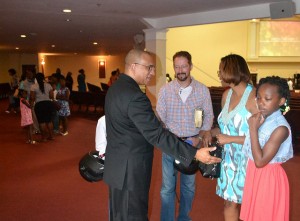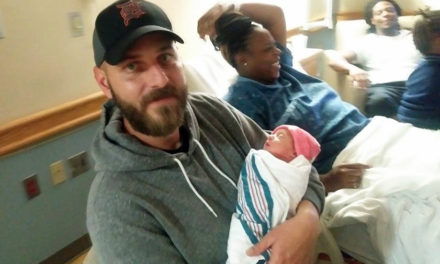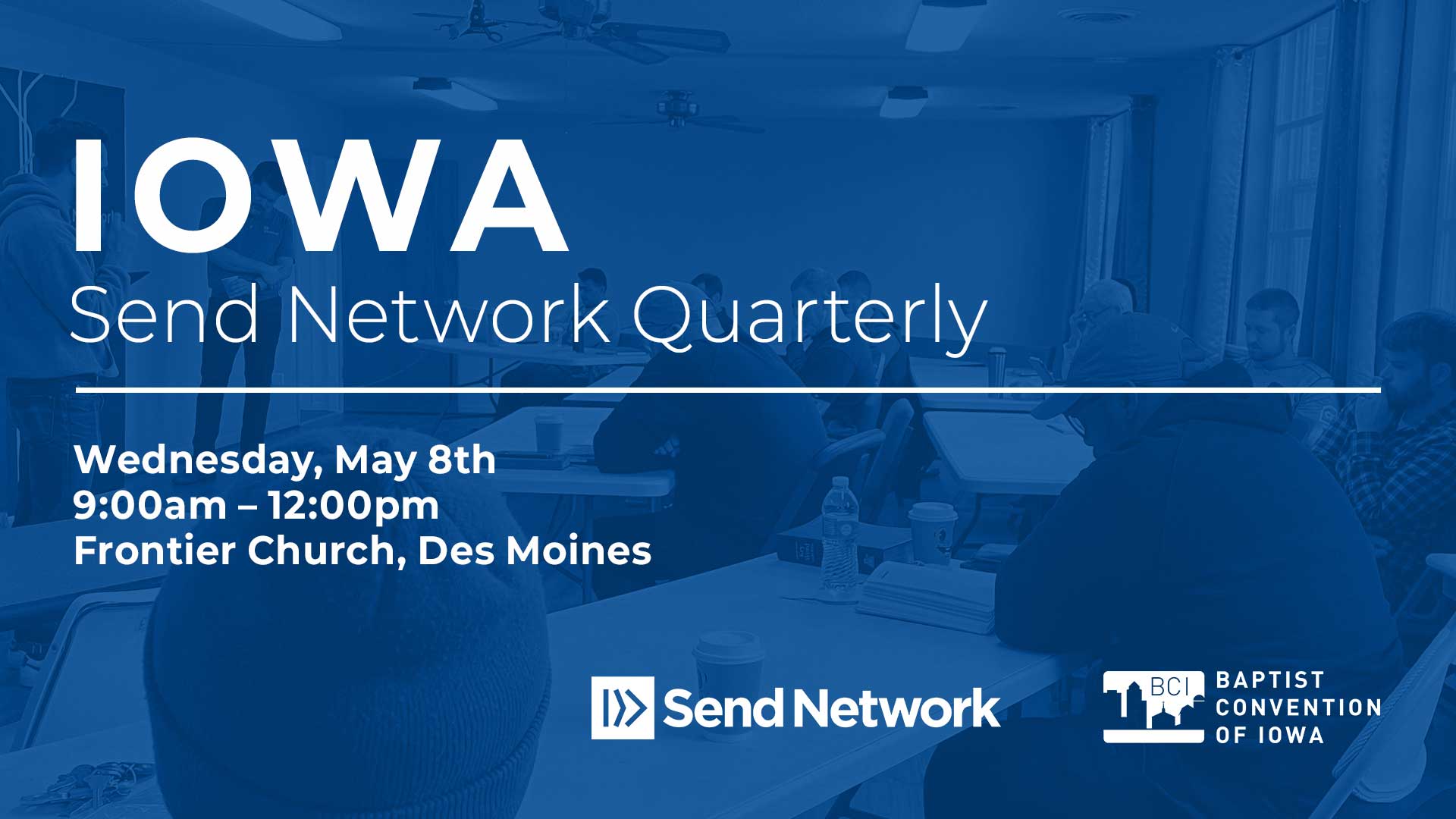By Tobin Perry

Emmanuel Community Church pastor Eric Suddith (left) greets members of the congregation following worship services. The re-plant of the church in 2004 has lead to community outreach through a food bank, sports ministries and other missions focused engagement.
Photo courtesy Emmanuel Community Church
CONYERS, Ga. – If Eric Suddith would have looked at Emmanuel Baptist Mission Church in Conyers, Ga., as only a business proposition in 2004 when he first encountered it, the Wharton-trained former businessman-turned-pastor likely would have given it up for dead. Just over a decade old at the time, the church had only eight members left. It had no plan to move forward and impact its community.
But Suddith knew that Emmanuel wasn’t a business proposition. It was a spiritual one.
“Jesus Christ created the Church to go out and message His redemptive plan and teach those believers how to grow in His living Word,” Suddith said. “That I didn’t learn at the Wharton Business School. They didn’t teach me that. They taught me business stimulation, strategic planning. I didn’t learn that from AT&T either. So God’s redemptive plan has to be understood by the church planter.”
Close to a decade after Suddith arrived at Emmanuel to “replant” the church (now called Emmanuel Community Church), God has exchanged a church of 13 for one with 1,300 in attendance and provided a 70,000-square-foot facility to serve as a ministry hub in the process.
Suddith spent 25 years in the corporate world, including 15 in executive positions at AT&T. He resigned from the corporate world in 2009 after almost 20 years of juggling ministry and business. While he says he has learned from his business background, maybe the most important lesson has been how different the two realms are.
“What really shook me about the work of a church planter is that the work is spiritual,” Suddith said. “What I mean by that is that this is spiritual warfare. Satan wants to disable the church planter because the church planter is the most effective way to evangelize the lost. If it were easy, everyone would be doing it.”

Making Emmanuel Community Church a place where families sense being a part of the mission was key in the turn around lead by pastor Eric Suddith (right). The church went from 13 members in 2004 to more than 1,300 now.
Photo courtesy Emmanuel Community Church
With only 13 people in attendance when he arrived (eight from Emmanuel and five members of his own family), finances were tight. Suddith’s corporate background reminded him of the importance of developing a workable plan to turn the church around. Immediately, he told the church that in a year they would be able to take what they were currently paying on rent and use it to build a new building.
“Corporate gave me the framework for forming a strategy,” Suddith said. “The context for that wasn’t corporate because God isn’t corporate—He’s spiritual. But some of the fundamentals were there—like financial management, modeling, all the pieces you need to do analysis, create a plan and execute it, all of that was there.”
When asked how he grew the church from 13 to 1,300 in less than a decade, Suddith replies simply: “I didn’t grow it. I taught Bible studies. I preached solid, theologically sound sermons.
Today the church not only has numbers but effective ministry into the community, including a preschool, a variety of Upward sports ministries, men’s ministries, women’s ministries and a large food bank, all serving the entire county.
“There’s a team of 50-60 that keeps [the food bank] going,” Suddith said. “You come over here on Tuesdays and Thursdays, and it’s like a McDonalds drive through. Cars are wrapped around the building.”
Suddith says he is excited about the North American Mission Board’s church-centric focus on planting and re-planting churches through Send North America. He says when he got started in 2004-2005, it was tough to find mentors to guide him in the replanting process. Since everything was new to him, he counts many mistakes along the way. He believesNAMB’s new Farm System will go a long way in shoring this issue up.
Most important, Suddith says, the church—nearly a decade after he replanted it—is reaching people with the gospel.
“God has really blessed us to have capabilities,” Suddith said. “The harvest is great. My view is that the job of the church planter is to extend the gospel of Christ so that people come to know Him personally. God is pleased with a healthy church plant. That’s what we’ve been trying to do over the past several years.”
Tobin Perry writes for the North American Mission Board. For more information about legacy church planting, visit namb.net/revitalization.







